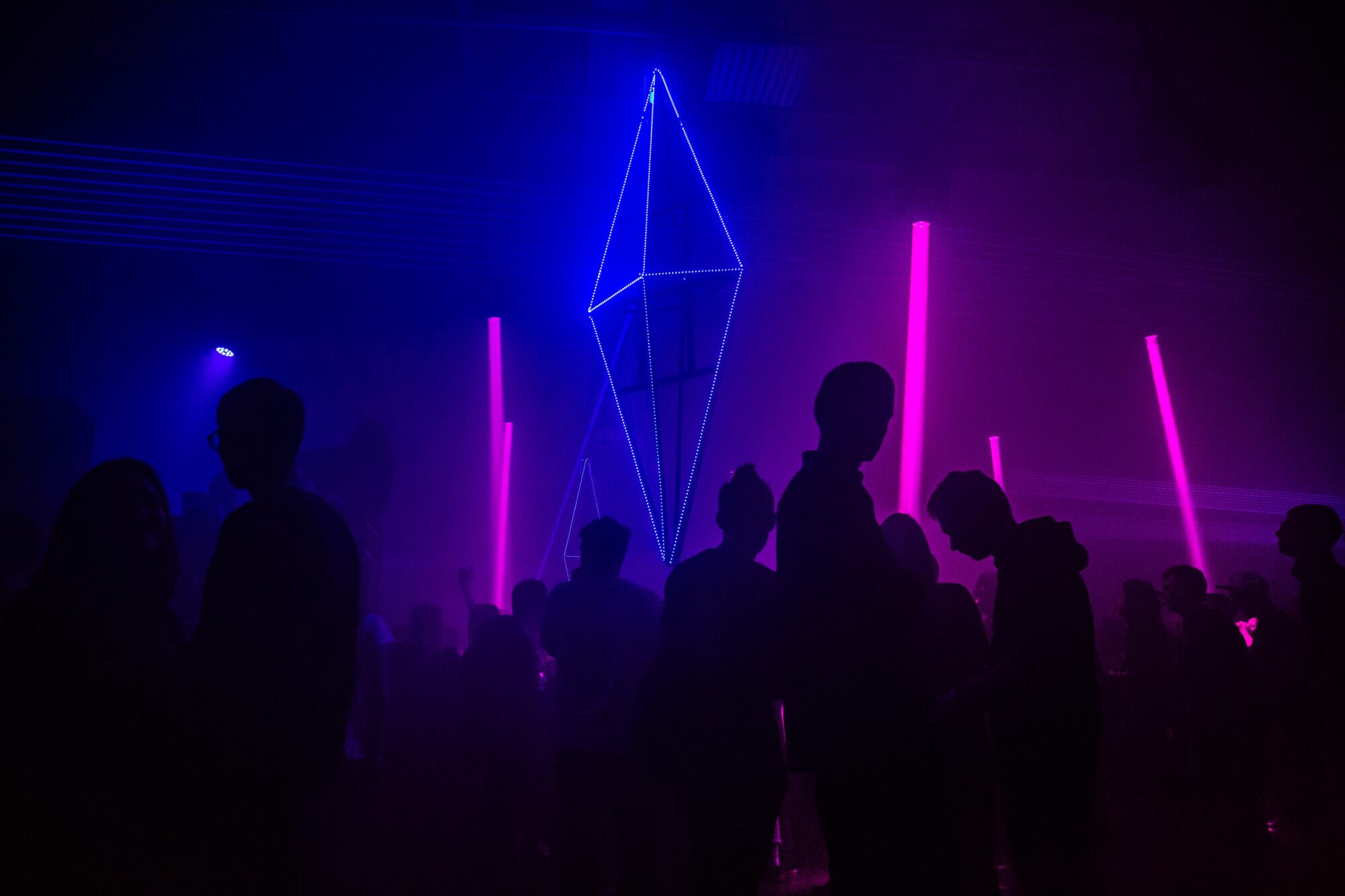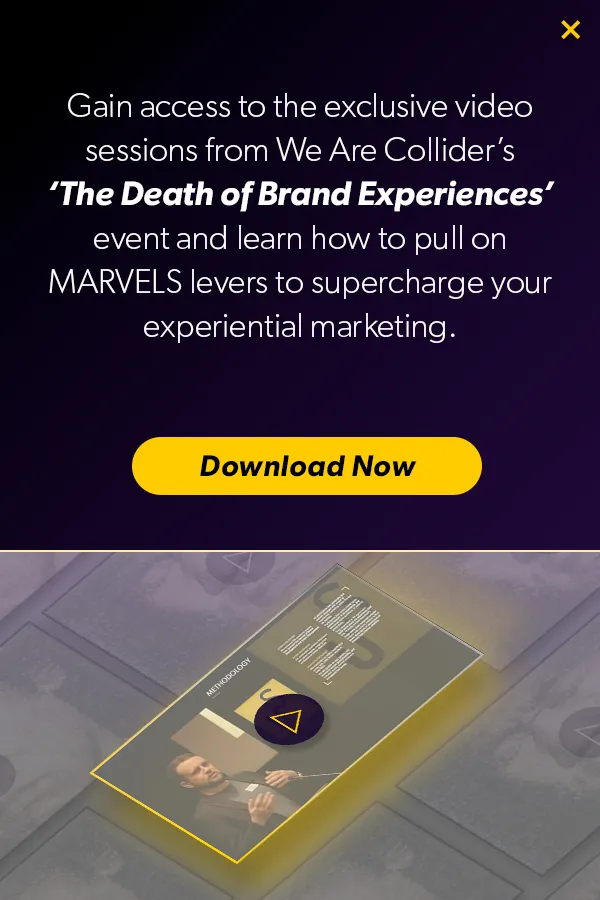
In a world where the cost of living has increased exponentially, and where recession looms heavy overhead, it would be understandable to think that spending on experiences would be significantly reduced. However, our research shows that expenditure on experience categories has outpaced that of material. More people are spending more money on more experiences and less “things”.
But now the pandemic is behind us, has there been a slow down on customers desiring experiences over more traditional brand events? We asked a series of experts their thoughts at a brilliant in real life event held at the Soho Hotel in London and feel we can say with confidence, that brand experiences, when done right, are far from dead.
Let’s first take a look at the reasons why end-users are engaging more and more with genuine experiences. It’s all to do with their brains and the ways in which experiential marketing can pull a series of levers within human behaviour to purposefully impact customers on a psychological level. It makes sense really, experiences illicit more emotional attachment and meaning that physical objects. When people are asked about their life, they usually regale the listener with stories of weddings, concerts that changed their life, holidays of a lifetime etc. Very rarely do you hear someone waxing lyrical about a specific purchase on their deathbed. When people are hypothetically asked to rescue items from burning buildings, the response is largely always the photo-albums, the memories of the experiences that made up their lives.
So how do brands leverage the power of experiences in the real world? We heard from experts at Sky VIP, Proper Snacks, Häagen-Dazs, Asahi and We Are Collider who all gave insights on how to harness human behavioural science to make experiences truly memorable and provided some key takeaways which we believe every marketing team should use when leveraging the power of experiential within their brand campaigns.
Build an emotional connection
Studies show that experiential marketing can help turn customers into advocates, who as a result provide greater brand loyalty. Tracy Sorgiovanni, Head of Operations at We Are Collider summarised this in her session, stating that;
“75% of consumers say consistent brand experiences and customer services, improve their likelihood to do business with the brand 73% say a good experience is key in influencing their brand loyalties and 40% feel that they become more loyal to the brand after participating in a brand experience or brand activation.”
So how does this happen?
Through the creation of emotional connections between the brand and the consumer.
Every session discussed the need to create a meaningful interaction between the brand and the consumer, whether that be providing them with access to once-in-a-lifetime activities or suspending them from a crane above a pit full of snacks, the element of Magic cannot be underestimated.
Magic is the most important lever to pull for any experiential campaign. Behavioural scientist Patrick Fagan explains that this is because magic allows audiences to be immersed in an activity which heightens their senses, provides opportunity for the generation of self-esteem and allows them to empathetically experience a story by living it.
Using Magic, each of our speakers was able to generate a really meaningful emotional connection with their customers and end-users, making the activity, and therefore the brand, memorable.
Take for example, Häagen-Dazs’ ‘Don’t hold back’ campaign, which saw the creation of a portable, fun and ‘joy filled’ experience in the form of ‘The Ice-Cream Van of Ice-Cream Vans’. Jade Evans, Global Senior Brand Manager discussed how something as simple as ‘a pimped up ice cream van’ was able to support Häagen-Dazs in their goals to modernise their brand positioning and to ‘provoke moments of joy’. They gave away ice-creams and bucket hats and put on DJs for a summer party that cemented the brand as being fresh, modern and fun. They brought magic to their experiential activities by putting their customers at the centre. They encouraged an emotional connection and they saw fantastic results with a 45% increase in sales vs the previous year.
“The challenge I had was how do we really leverage our owned and earned media with cost of TV ads rising to really create those more emotional connections with the consumer really looking at depth of engagement again. How can we create an immersive and highly PR-able brand experience that provokes moment of joy.”
Customer loyalty requires brand investment.
Recognising that customer attention spans are decreasing rapidly, and brand affinity is no longer a given forces brand marketers to find new ways of providing benefit above and beyond discounts or gimmicks.
Experiential activities can help to generate customer loyalty regardless of sector, brand type or location, simply by providing a value in exchange for the loyalty.
This exchange of value for loyalty is further enhanced when marketers choose to use the lever of Relevance. By creating meaningful experiences for specific segments, customers are better able to fit these to their personal values and goals, resulting in strong brand affinity.
Behavioural scientist Patrick Fagan states that by using relevancy in their experiential marketing, brands can tap into the ‘cocktail party’ affect, whereby our brains will tap into a conversation someone may be having about us elsewhere, despite it being a noisy environment.
“Your brain is filtering all the information around you, and consciously paying attention to only a tiny slice of that. And so what you want to do through relevance is capture that tiny slice by being something that’s personal to people.”
Sky VIP are a brand who have harnessed this to great success. Karen Swift, Brand Experience and Events lead at Sky, shared how utilising relevancy has resulted in greater brand loyalty and an army of brand advocates.
“Through extraordinary experiences, free experiences and rewards and getting them closer to more of what they love, we break that fourth wall and deliver experiences that really emotionally connect to their passion points and go to them in more meaningful ways.”
But this level of personalised relevancy doesn’t come easy. Sky VIP have a huge team of data analysts and researchers whose sole purpose is to ascertain what is relevant to their customers at any point in time. They have invested in building brand loyalty by making this a focus for their marketing activity and are leveraging the relevancy lever by tapping into their customers own goals, values and needs.
A valuable experience is a memorable experience.
Assigning value to an experience is something marketers work very hard on. We need to prove ROI on activity which tends to be high cost, but our speakers clearly identified that we should also focus attention on the value these activities have for brand customers.
Value in behavioural science, doesn’t simply refer to the price tag associated with them. It’s about how useful they are and about the functional benefits they provide their audience.
Gareth Morgan, Global Marketing Manager for Peroni Nastro Azzurro at Asahi explored how their Il Pitstop campaign provided value to consumers by allowing them a glimpse behind the scenes of a real-life Formula One garage, something which for fans of the sport is invaluable.
By leveraging an incredible partnership with the Aston Martin Formula One team, the team at Peroni were able to provide real value to their customers alongside their sampling activation for non-alcoholic Peroni Nastro Azzurro 0.0%.
“At a sampling experience you’re going to get value because you are being given something for free, but there is also a more psychological element around being interesting and giving people something of cognitive value. Providing people with a little bit of creative curiosity will get people to really engage with your experience.”
Being product centric doesn’t mean you can’t put customers first.
When working on a brand experience it’s hard to shy away from the brands products being up front and centre, after all, the underlying purpose of these events is to meet brand goals. But just because the brand and the product need to be central to the campaign, doesn’t mean the customer shouldn’t be at the forefront of the experience.
The levers of behavioural science which support this idea are known as exchange, labelling and sociality, and all three were present in a recent activation from the Proper Snacks brand with their ‘Propper Dropper’ campaign.
The experience saw influencers and members of the public have a go at being the claw in a human sized “grabber” machine, being dropped into a pit of Proper snacks, which had some extra hidden prizes as well.
The experience allowed people to actually be involved at a physical level and encouraged social interaction as those in the harness grabbing the snacks were controlled by someone else. But it also was heavily branded, with Proper being at the heart of the campaign.
Bridget Hirst, Head of Brand illustrated how using exchange, labelling and sociality resulted in a truly immersive and fun experience but also a viral campaign which generated the best PR coverage the brand has had in its 11 year history.
“It was so product centric, and it’s quite rare that you get a product centric, engaging, fun idea, but what that meant was that every time someone posted content, there would be some element of Proper branding, meaning we were allowed to be a bit playful. From people’s hats to the bags, they used to take prizes away in, to staff uniform, everything was branded resulting in impact at every touchpoint.”
Use the MARVELS like a mixing desk
Our final key takeaway from the event came from our very own Tracy Sorgiovanni, as she helped to put the theory into practice by outlining how brands can action the MARVELS behavioural science levers in the real world.
“There are some MARVELS that you might want to push up on some campaigns and some that you might want to keep more level. To set the mixing desk of MARVELS we have to ask the right questions. From the start, establish a clear, single-minded objective for your campaign so you can dial certain elements up and down to suit your objectives.”
By establishing your objectives up front and putting in the time to really understand the levers you should be pulling, brands can prevent experiential from being an afterthought.
“Experience should be hard baked into your strategy from day one, and the high level business objectives must be considered through every single touchpoint within campaign proposals to ensure that the MARVELS help brands achieve their goals.”
Based on the learnings gathered from our speakers, our research into the behavioural science of experiences and our understanding of the brand landscape, we think we’re safe in saying that, to ensure real results, the time has come to wish traditional experiences goodbye, and to embrace those which focus on real human behaviour to ensure success.
“Most people don’t know how to enjoy themselves. It’s not when we have our feet up, it’s when we’re up against it – something like skiing. If you really want to have a satisfying experience, then you need to have the challenge.” James Wallman, CEO, World Experience Organisation
If you want to find out more about how We Are Collider utilise behavioural science to create truly successful experiences, get in touch.



